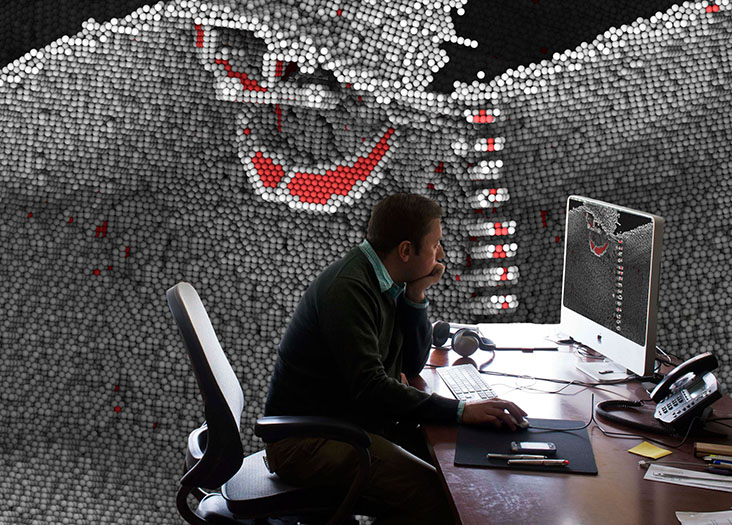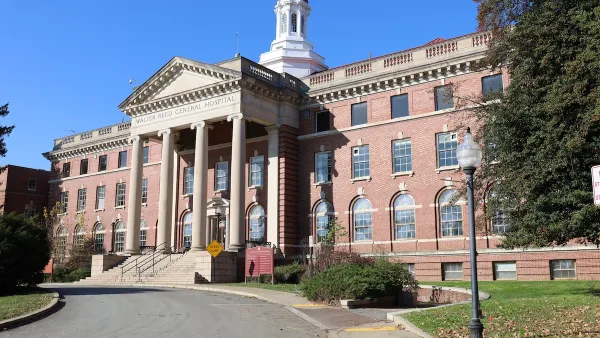Michael Demkowicz says that steel, aluminum, and concrete are among materials we understand least, but all have big possibilities for engineers.

For Michael Demkowicz, some of the greatest scientific mysteries and major engineering opportunities lie in everyday materials. “Structural materials are sometimes seen as low-tech,” he says. “Who thinks about steel, who thinks about aluminum, who thinks about concrete? But those are probably some of the materials we understand the least.”
One mystery of structural materials is why they degrade under corrosion, heat, and radiation—their performance isn’t what it could be by a long shot. Theoretical performance levels are much higher than what current materials are capable of, says Demkowicz, an associate professor in the Department of Materials Science and Engineering. This has major practical implications. The lack of high-performance structural materials makes it harder to develop efficient energy production, resilient infrastructure, and sustainable transportation, he said. The combination of the technological need and the scientific mystery is “a huge opportunity that cries out to be taken advantage of.”
Demkowicz’s lab models the physics of structural materials to better understand how they degrade, and ultimately break down. He aims to use the models to design new materials that are resistant to radiation damage, fracturing, and corrosion. The result could be jet engines that run more efficiently, bridges and buildings that withstand earthquakes, and nuclear power plants that produce less waste.
In all those cases—environmental conditions, mechanical loading, and radiation—failure is ultimately related to the formation and growth of defects in the metal’s crystal structure, Demkowicz says. The challenge is controlling the defects. “Can we do some kind of ‘defect engineering’ to make the material behave the way we want?”
An ideal behavior for structural materials is self-healing. Demkowicz’s lab is on the trail of several methods of producing materials that repair microscopic damage from environmental and mechanical stresses. One potentially groundbreaking method is a surprise discovery that emerged from research about hydrogen embrittlement, which occurs when hydrogen atoms infiltrate metals in acidic environments. Demkowicz and his graduate student, Guoqiang Xu, discovered that, under the right conditions, putting metal under tension can close rather than open microscopic cracks.
Another method addresses helium embrittlement, which occurs when metals are exposed to radiation. Demkowicz’s lab is designing metals that spontaneously form microscopic channels in the presence of embedded helium atoms. The channels would allow the helium to escape rather than form tiny bubbles that weaken the metal.
The intimate connection between basic research and technology is readily apparent in the field of materials. The common name for the field, materials science and engineering, makes the connection explicit. Demkowicz and Xu chose to publish their crack-healing paper in a physics journal rather than in a materials journal to highlight the fundamental science of the discovery.
The effort to develop self-healing metals is one example of technological innovation emerging from basic research. Given the abundant opportunities for basic research in structural materials, we’re likely to see many more, says Demkowicz. “In my own research I see it all the time,” he says. “We discover something new and unexpected that helps us understand a material better, and it’s never long before we come up with an idea of how to use it.”
-by Eric Smalley
FULL STORY: MIT Spectrum

Analysis: Cybertruck Fatality Rate Far Exceeds That of Ford Pinto
The Tesla Cybertruck was recalled seven times last year.

National Parks Layoffs Will Cause Communities to Lose Billions
Thousands of essential park workers were laid off this week, just before the busy spring break season.

Retro-silient?: America’s First “Eco-burb,” The Woodlands Turns 50
A master-planned community north of Houston offers lessons on green infrastructure and resilient design, but falls short of its founder’s lofty affordability and walkability goals.

Test News Post 1
This is a summary

Analysis: Cybertruck Fatality Rate Far Exceeds That of Ford Pinto
The Tesla Cybertruck was recalled seven times last year.

Test News Headline 46
Test for the image on the front page.
Urban Design for Planners 1: Software Tools
This six-course series explores essential urban design concepts using open source software and equips planners with the tools they need to participate fully in the urban design process.
Planning for Universal Design
Learn the tools for implementing Universal Design in planning regulations.
EMC Planning Group, Inc.
Planetizen
Planetizen
Mpact (formerly Rail~Volution)
Great Falls Development Authority, Inc.
HUDs Office of Policy Development and Research
NYU Wagner Graduate School of Public Service



























